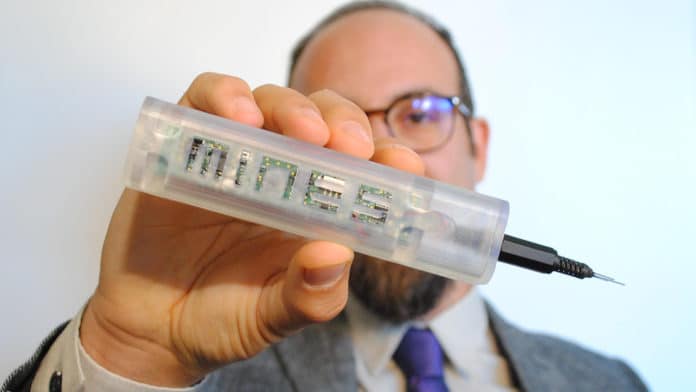Anesthesia is not personalized yet. There are several methods that Anesthesiologists use while calculating the right dose.
Although, every individual responds to anesthetics differently. Currently, there is no way to know the response will be until the anesthetic is administered.
Before using it on a patient’s body, anesthesiologists have to ensure that they don’t wake up too soon and have no memory of the procedure. Still, they must use the smallest possible amount of drugs, which can often be taxing on the body.
In reality, the supplemental doses are administered with no knowledge of what the actual drug concentration already is in the patient.
Scientists solved this problem by developing a system that measures propofol concentration in patients as they operate on and adjusts the doses they’re administered accordingly. Propofol is one of the main compounds used in anesthesia, but it’s also the hardest to measure.
The device looks like a huge syringe with a sensor-equipped needle. The sensor electrodes measure propofol concentrations in a patient’s blood. These measurements are then analyzed using AI.
Sandro Carrara, a professor at the EPFL School of Engineering, said, “Scientists have been working for years to develop sensors that can instantly measure blood concentrations of compounds in anesthetized patients so that doctors can personalize the doses.”
Thierry Buclin, pharmacology professor and chief of the CHUV’s clinical pharmacology division, says: “Propofol is one of the best anesthetics out there, but getting the dosage just right can be complicated. So an easy-to-use system that can monitor propofol concentrations in the operating room would be a major step forward in surgery and intensive care.”
Journal Reference:
- S. Aissa et al., “Smart Portable Pen for Continuous Monitoring of Anaesthetics in Human Serum With Machine Learning,” in IEEE Transactions on Biomedical Circuits and Systems, vol. 15, no. 2, pp. 294-302, April 2021, DOI: 10.1109/TBCAS.2021.3067388
